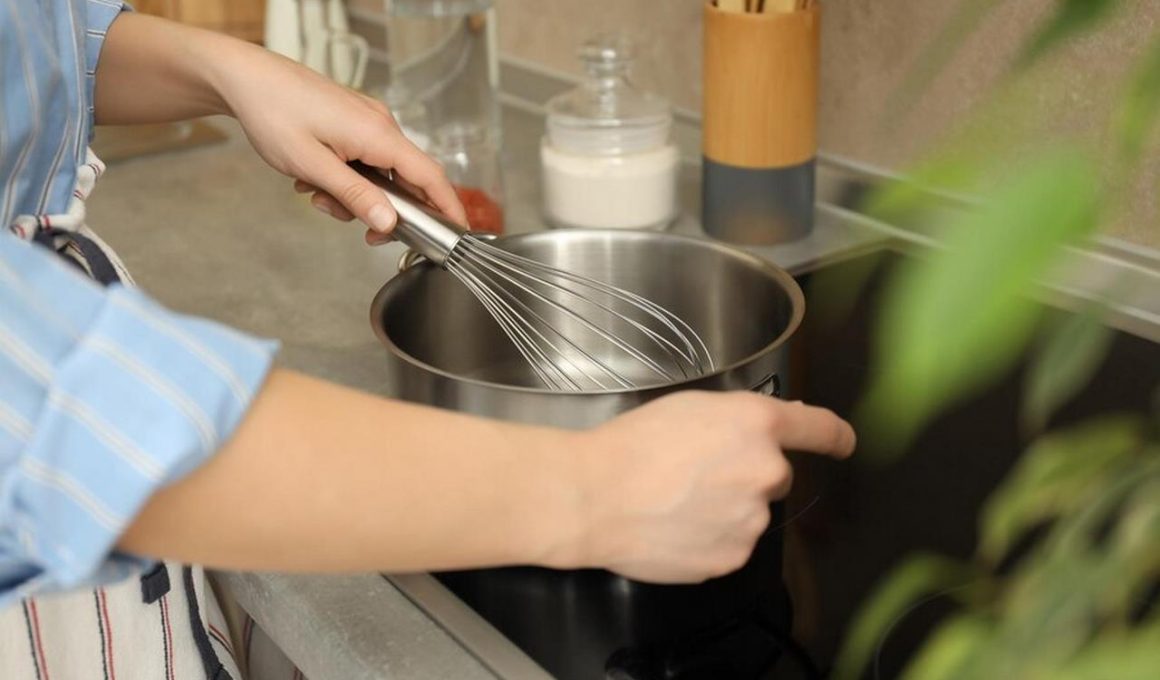There are several ways to cook duck, including roasting, pan-searing, and confiting. You can even serve it plain and top it with a fruit sauce for a simple, everyday meal. Here are some tips for cooking duck:
Spatchcocking results in faster and more even cooking
Spatchcocking allows the heat to circulate more evenly throughout the entire bird, and allows the thigh and breast portions to cook more quickly than the rest of the bird. A non-spattched duck will cook from the outside in, rendering its fat in the process. Because duck breast muscles are made for flight, spatchcocking ensures a more even cook throughout the entire bird.
In addition to using this technique to cook chicken, spatchcocking is also beneficial when cooking other types of poultry. The flattening of the animal’s backbone allows the dark meat to absorb more heat and remain moist. A properly prepared spatchcocked bird can also benefit from the right rub, marinade, or seasoning. These cooking methods are particularly useful for roasting and pan-frying poultry, and can be used with a variety of different recipes.
Spatchcocking reduces cooking time by 30 to 50 percent. This method is best for duck and chicken that needs to reach an internal temperature of 165 degrees Fahrenheit quickly. However, you can also use spatchcocking to cook other types of poultry, such as guinea fowl and pheasant. If you’re cooking poultry in the oven, you’ll need to use a trivet to keep the meat warm. Using a trivet, you can reduce the time needed to cook the chicken by up to half an hour.
When spatchcocking duck, the backbone should be removed. This will allow the meat to cook more evenly. Compared to butterflying, spatchcocking also results in a faster and more even cook. By making this cut, the duck will be less likely to get overcooked or undercooked parts. You can also save the backbone for soup or stock. After the spatchcocking, you should remove the giblets and the skin from the duck.
Seasoning the skin with kosher salt
One of the best ways to prepare duck is by seasoning its skin with kosher salt. This is particularly important because the skin absorbs seasoning more readily than the meat. The amount of seasoning required for one breast is approximately one cup. You can use less, but it’s best to sprinkle the skin liberally. After seasoning the meat, leave it covered in the fridge for about two hours or overnight to let the flavors penetrate the meat.
After cleaning the duck, season the skin with kosher salt. First, pat dry with a paper towel. Next, place the duck skin side up on a rack or pan. A Bradley rack or a Weber grill pan are ideal for this purpose. Sprinkle about 1.5 to 2 teaspoons of coarse kosher salt on the duck’s skin. The salt draws the juice from the duck to the surface and dissolves it. Once the skin is cooked, it will be tender and juicy.
After seasoning the inside and outside of the duck, stuff it with fruit stuffing and tie the legs with kitchen twine. Line the roasting pan with aluminum foil. Insert a rack over the foil and place the duck breast-side up. Roast the duck for about 50 minutes. While the duck is roasting, you can also prepare a side dish with roasted vegetables. You can also serve the duck with potatoes and roasted vegetables.
Then, season the duck breasts with a generous amount of salt and pepper. Duck breasts should be cooked on the skin side 80% to 85% of the way. Then, the flesh side should cook for about two to five minutes longer. Once the duck is done, remove it from the pan and serve with rice, potatoes, and a red wine sauce. You can use this recipe as a basis for preparing delicious duck breasts.
Once the duck is roasted, season the skin with kosher salt and score the meat with a sharp paring knife to create a cross-hatch pattern. You can then use a pair of kitchen shears to trim the fat globules hanging out of the cavity. The legs are prone to having more fat and should be trimmed by a chef, as they are higher than the breasts.
Preparing pan sauce for duck
When preparing pan sauce for duck, there are a few things to keep in mind. Ideally, you should keep the sauce to a minimum. The duck breast should be cooked for at least 20 minutes, but no more than five minutes. This time is contingent on thickness and the desired level of doneness. If you are aiming for medium-rare meat, cook the duck breasts until the internal temperature reaches 130°F.
To make the sauce, you will need duck fat. For seasonality, fresh pitted cherries will do. Then, saute ginger, garlic, chillies, and stock until fragrant. When the stock is ready, add soy sauce and reduce to half. Add more soy sauce and honey, if desired, to taste. Once the sauce is done, you can add red chillies, cucumber, and spring onions.
After the duck is cooked, you should make the sauce. Using the fat from the duck, you can cook vegetables in it. The fat is great for roasting vegetables or using as a sauce. Place duck breasts in a hot pan and cook until the skin turns crispy. If the skin is tender, you can add a few grapes to the sauce to accompany your duck breast. Then, serve it with the pan sauce and enjoy it with your family and friends!
For best results, you should season the duck breasts with salt and pepper. You should then put them in the fridge for at least eight hours, or up to three days if you want to prepare a larger batch. The cold air from the refrigerator helps the skin to dry out, which is important to achieve crispy skin when rendering the fat. Once the duck is cooked, slice it thinly and serve with the pan sauce.
Before preparing the sauce, you should score the skin of the duck. This will help render the fat more easily and effectively. In the case of puddle ducks, you should score the fat on the skin side. Use a sharp knife to make the score deep enough to go through the meat, but shallow enough to prevent the skin from getting too rubbery. If you’re preparing pan sauce for duck, you should keep in mind that duck is a delicate meat, so it is important to avoid letting it dry out.
Storing leftovers
Although it is best to eat duck in its freshest form, you may have leftovers that you would like to store for later use. If stored properly, leftover duck will still be delicious. Here are some tips to store leftover duck for later use. First, store duck at room temperature. Duck will continue to lose its freshness over time. To keep it fresh, don’t leave it out for more than an hour after cooking. Once cooled, store the duck in an airtight container in the refrigerator or basement.
When cooking duck, make sure to cook it to an internal temperature of 165 degrees Fahrenheit or higher. Otherwise, the meat may become overcooked, exposing the meat to salmonella. Also, cut the breast into small portions, and don’t overfill them. Duck will expand as it is frozen, so make sure to keep the meat as small as possible. Once cooked, place the liquid portions in a separate bag, preferably a zippered freezer bag. This will prevent grease and fat from seeping into the meat.
To store leftover duck fat, clean the accumulated fat and store it in an airtight container. Duck fat can be refrigerated indefinitely. Just remember to store it in an airtight glass container. Duck fat can be used for other cooking purposes, such as making baked goods or making sauces. You can also store leftover duck fat in jars sterilized with hot water. Then, freeze them and use them at a later date.
Once you’ve cooked your duck, store the leftovers in the refrigerator. They can last for three to four days, and you can also reheat them in a microwave oven for a few seconds per slice. You can also eat them cold straight from the fridge. You can unsubscribe from the newsletter at any time. You can stop receiving emails at any time. This is totally free! You can cancel your subscription anytime.
When storing leftover duck, keep in mind that it will last for about four days in the fridge and two months in the freezer. If you have leftovers for longer than four days, you should refrigerate them and consume them within a few days. Depending on how you prepare the duck, leftover duck can last up to three days in the fridge, and up to six months in the freezer. If you’re not sure whether it’s safe to keep leftover duck, you should discard it and use it within two or three days.
Podobne tematy




